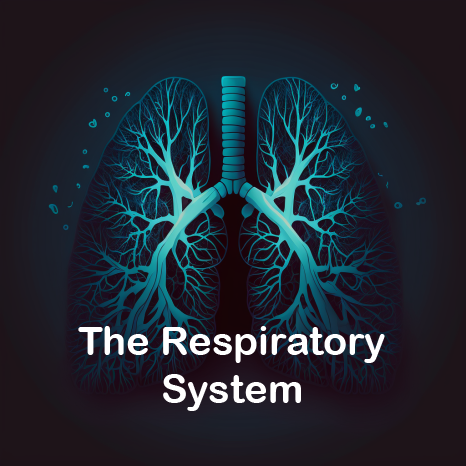Respiratory System Study Guide
What is the respiratory system? The respiratory system is a series of organs that work together to exchange oxygen and carbon dioxide in the body. It consists of the nose, pharynx, larynx, trachea, bronchi, and lungs.
Nose
The nose is the primary organ of smell and is responsible for filtering, warming, and humidifying the air breathed in. The inside of the nose is lined with tiny hair-like structures called cilia, which help to filter out dust and other particles. There is also this feature of the nasal cavity called the ‘turbinates’ that helps humidify the air as it passes through the nose. This is where the upper airway begins.
Pharynx
The pharynx, or throat, is a muscular tube that connects the nose and mouth to the larynx and esophagus. It is responsible for swallowing and directing food and drink to the esophagus and air to the larynx. You have the nasopharynx, or the back of the nasal cavity, and the oropharynx, the back of the oral cavity.
Larynx
The larynx, or voice box, is located in the pharynx and is responsible for producing sound. It contains the vocal cords, which vibrate to create sound when air passes through them. The larynx also has a flap called the epiglottis, which covers the opening to the trachea during swallowing to prevent food and drink from entering the airway. This is the point where the upper airway ends and the lower airway begins.
Trachea
The trachea, or windpipe, is a tube that carries air from the larynx to the bronchi. It is supported by cartilage rings and lined with cilia and mucus, which help filter out dust and other particles. The trachea extends from the larynx to the carina, diverting into your left and right mainstem bronchi.
Bronchi
The bronchi are tubes that branch off the trachea and carry air to the lungs. The bronchi are lined with cilia and mucus, which help to filter out dust and other particles. They continuously branch off into smaller and smaller tubes called bronchioles, until they end at the alveoli.
Lungs
The lungs are located in the chest cavity and are responsible for exchanging oxygen and carbon dioxide. The left and right lungs are separated by the mediastinum, a partition that contains the heart, trachea, and esophagus. The lungs are divided into smaller units called lobes, and each lobe is further divided into tiny air sacs called alveoli. Oxygen from the air is absorbed into the bloodstream through the alveoli. Carbon dioxide is expelled from the body when we exhale.
Respiratory muscles
The respiratory muscles, including the diaphragm and intercostal muscles, are responsible for expanding and contracting the chest cavity to facilitate breathing. The diaphragm is a dome-shaped muscle that separates the chest cavity from the abdomen and is the primary muscle of respiration. The intercostal muscles are located between the ribs and also help to expand and contract the chest cavity.
Respiratory system disorders
Several disorders can affect the respiratory system, including asthma, emphysema, chronic bronchitis, and pneumonia. When you get down to it, all of the following are a form of COPD (chronic obstructive pulmonary disease)
- Emphysema is a chronic lung disease that damages the alveoli and makes it difficult to exhale.
- Chronic bronchitis is a type of chronic obstructive pulmonary disease (COPD) that causes inflammation and mucus production in the bronchi. Pneumonia is an infection of the lungs that causes inflammation and fluid accumulation in the alveoli.
- Asthma is a chronic inflammatory disorder that causes the airways to narrow, making it difficult to breathe. Exhalation is the main problem associated with asthma.
The important things to take away from this is that our lungs are a two-way hallway that has one side open with the nose and mouth, while air has to turn around at the alveoli once it delivers oxygen, and takes co2 away. This is a very simple guide, and each of these parts is much more complex than described. While there is not a shortage of resources or guides to these things all over the internet, the list above is very concise and to the point over the main idea for this system. If you’re interested in additional resources, we have a brief study guide for all the main systems available for free, with even more available if you subscribe and create a paid account today.
